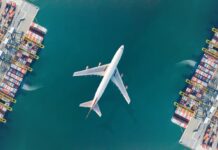

The air cargo market has had a rollercoaster 12 months and this unpredictability and volatility is set to continue into 2016.
Boeing’s regional director for airline market analysis, Tom Crabtree (pictured) says the US aircraft manufacturer is forecasting a similar year to the one soon to draw to a close.
Speaking to Air Cargo Week from Seattle (US), Crabtree explains: “We had high hopes for 2015 and they did not materialise due to the under-performing world economy and world trade in general and also due to lower industrial production.
“That being said, growth in freight tonne kilometres (FTK) this year has been 2.7 per cent year-on-year (YOY) up to September and for October a small number of carriers have shared with us that growth is around 2.5-3 per cent.”
But Crabtree notes the tough times seen by the industry in 2015 is not a sudden trend: “This weak growth is indicative of the trade we have seen for the last six to seven years.”
As for 2016: “Next year, world economists are forecasting a downward of 2.5-3 per cent growth. The truth is we have not seen that growth since the 2009 down trend and the world economy has sub-performed.”
2015 has been an unstable year with airfreight getting a significant boost in the first quarter (Q1) due to the US West coast port slowdown, as the likes of car manufacturers like Toyota called on air cargo operators to move needed parts and other firms turned to air operators.
Air cargo markets are certainly forecast to achieve lower figures at the start of 2016, as this year’s Q1 was inflated and cannot be an accurate judge of how the market was performing.
Industry numbers are likely to be significantly down in Q1 of 2016 due to this, Crabtree explains: “Performance in Q1 will be particularly tough as we saw extraordinary growth and posted outrageous numbers in Q1 this year. We need to get through Q1 first and then there will be growth.”
As for how 2016 as a whole is likely to pan out, Crabtree says it is very difficult to forecast: “We could see negative numbers or we would get lucky and break-even or get some positive growth. It is a niche business and a lot of people forget that.
“In the first quarter of the year we will probably struggle, but there will be strong growth in North America and Europe. The continued strong dollar will help Europe and the US economy will improve.
“The developing world was going to carry us for economic growth such as China, Brazil and Russia, but due to various reasons in Russia and Brazil, they will continue to struggle.”
In looking ahead, Boeing garners the forecasts of various economists across the globe and Crabtree says they predict 2016 the air cargo market will be a bit stronger than this year.
“We do think growth could be around three to four per cent, but that is going be in air cargo FTK’s,” an optimistic Crabtree explains. “We recently did a poll with air cargo industry leaders who all agree that quarters three and four next year will be strong in 2016 and we (Boeing) agree with them,” he says.
Crabtree explains the North America and European economies are recovering and showing positive signs of growth. Capacity providers in both regions have reported rising demand in Q4 of 2015, he says.
Emerging markets across Asia, and Africa are still seeing strong growth and airfreight is set to continue to benefit from them next year.
Crabtree expects the likes of India, Vietnam, Myanmar and South Africa to perform strongly in 2016, while the sub-Saharan Africa region he expects will post improving numbers, which is fuelled by a growing middle-class and rising intra-African trade.
“India has turned out to be a very strong market and will continue to be a growing economy and market,” Crabtree explains.
As for China, its slowdown from the middle of 2015 caused shockwaves across the industry and global economies, and Crabtree says it gave the market a “really big scare” in Q3 of this year, but notes there has been a recovery in Q4 and he expects China to “stabilise” next year.
“All in all, things are going to be better taking in the half-glass full approach, rather than the half-glass empty approach,” Crabtree enthuses.
As for the freighter market, Crabtree says the need and use of all-cargo aircraft will continue and there decline is over-stated: “Air cargo is just a by-product in bellies and as a consequence freighter traffic has been in excess of 50 per cent for the last four years. There is a fundamental demand for them (freighters) and it is a different demand base for freighters.”
He notes freighters will always be in demand, giving an example of the Trans-Pacific trade lane, where 80 per cent of cargo is flown on freighters, but says there continues to be rising available belly capacity.
Crabtree feels cargo capacity reported in the bellies of aircraft is not as accurate as it should be: “Air cargo capacity in bellies is often over-quoted in press releases by operators and they are usually the exception rather than norm.
“We have seen the market picking up, but the vast majority of carriers we have been talking to are taking the ‘wait and see approach’ (to freighter orders) which we will continue to see into 2016,” Crabtree says.













